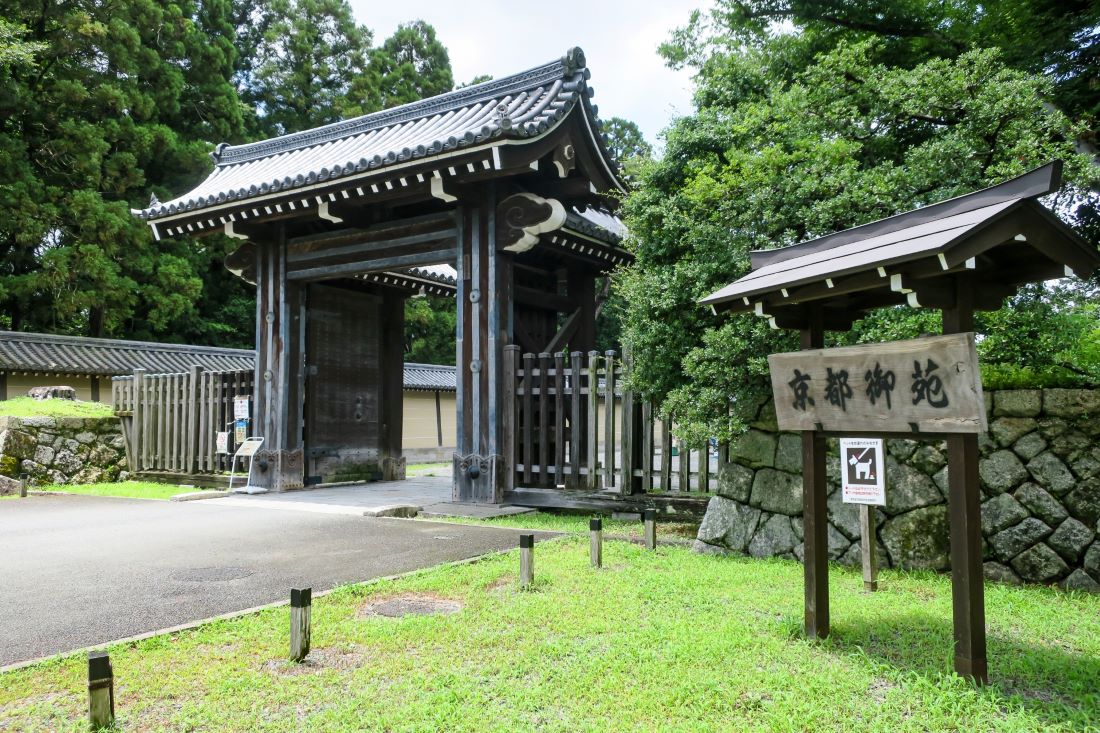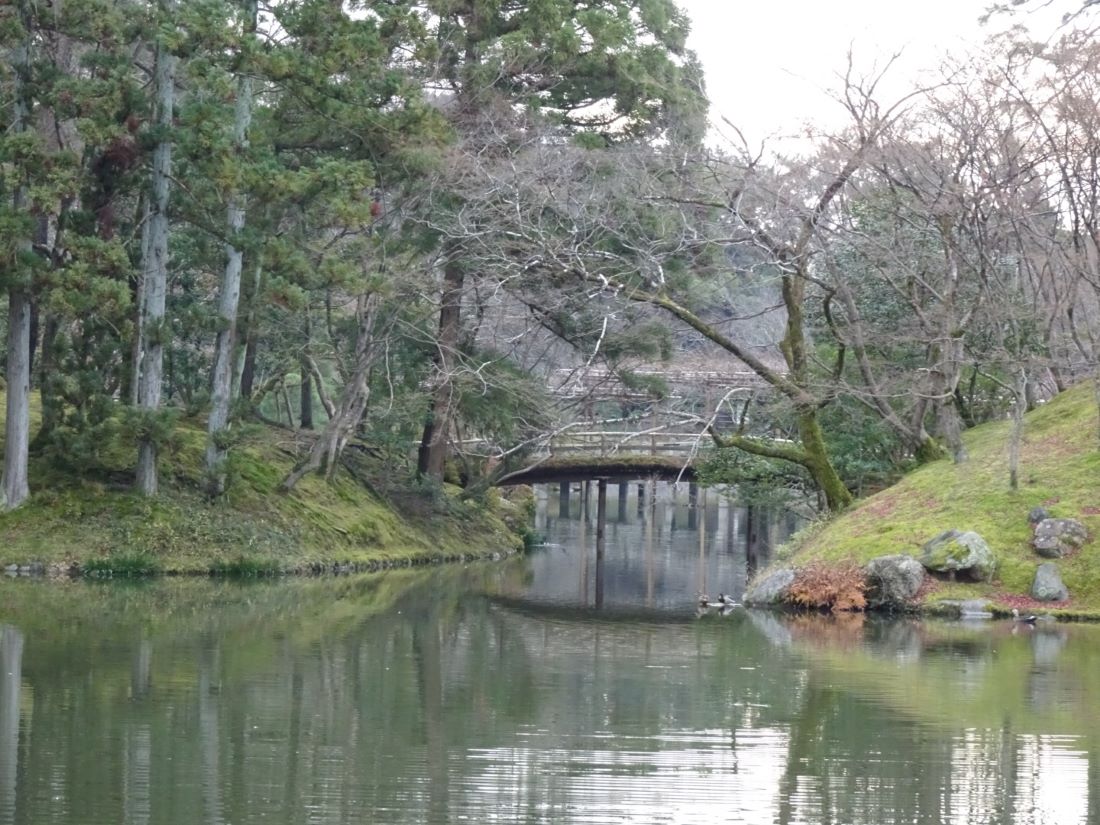Built-in the early 17th century, the Sento Imperial Palace was originally the residence of Emperor Gomizunoo after his retirement.

The palace is situated within Kyoto Imperial Park and is easily accessible from Kyoto Station. You can take the Karasuma Subway and arrive at the palace in just 10 minutes.
Upon arrival, you can explore the palace’s beautiful gardens, traditional architecture, and historic artifacts.
History

The Sento Imperial Palace was built in 1630 as a retirement palace for Emperor Go-Mizunoo, along with the Ōmiya Palace for the Empress Dowager Nyoin. Both palaces were destroyed by fire and reconstructed multiple times until a blaze in 1854 destroyed the Sento Palace, after which it was never rebuilt.
It served as the residence for subsequent retired emperors after Emperor Go-Mizunoo and was also used as a venue for imperial ceremonies, including the New Year’s Poetry Reading ceremony.
It was designed in the shinden-zukuri style, which was popular during the Heian period and the palace consisted of a series of buildings connected by covered corridors and surrounded by gardens and courtyards. It was also equipped with a shoin, a room used for reading and receiving guests, and a teahouse.
Today, the palace’s gardens and teahouses remain, and you can tour the grounds as part of the Imperial Household Agency’s visit guide.
Architecture
The Sento Imperial Palace is a beautiful example of Japanese architecture, with a focus on simplicity, natural materials, and harmony with nature. It was first built in 1630 and has undergone several rebuilds over the centuries due to fires and other damage.
The palace complex is made up of several buildings, including the Shunkoden, which was used to store Buddhist sutras, and the Otsunegoten, which was the living quarters for retired emperors. The buildings are constructed with natural materials such as wood, paper, and clay, and feature traditional Japanese architectural elements such as tatami mats, sliding doors, and shoji screens.

One of the highlights is the beautiful gardens, which were designed to be viewed from the buildings and are an integral part of the overall aesthetic. It feature a large pond, stone bridges, and carefully placed rocks and trees to create a sense of balance and harmony.
Gardens
Renowned for its stunning gardens that are spread over 22 acres, they were originally created for the retired emperor, and they are a testament to the beauty and tranquility of Japanese landscaping. The gardens are divided into three sections: the North Garden, the South Garden, and the East Garden.
The North Garden is the largest of the three sections, and it features a large pond with a small island in the center.
The pond is surrounded by cherry trees, which bloom in the spring, and maple trees, which turn brilliant shades of red and orange in the fall.
 You can also see the former residence of the emperor’s chief steward, which is now used as a tea house.
You can also see the former residence of the emperor’s chief steward, which is now used as a tea house.
The South Garden is a more traditional Japanese garden, with a central pond and a winding path that leads visitors through a grove of bamboo and past a waterfall. The garden is also home to a small teahouse where you can enjoy a cup of matcha tea.

The East Garden is the smallest of the three sections, but it is no less beautiful. It features a small pond with a stone bridge and a teahouse that was once used by the emperor’s mother. The garden is also home to a grove of plum trees, which bloom in late winter and early spring.
Visiting Sento Imperial Palace

You can explore the palace’s gardens and teahouses, which date back to the seventeenth century. If you’re planning a visit to Sento Imperial Palace, here are some tips to help you make the most of your trip:
-
- Apply for a guided tour: Guided tours of the palace are available twice a day, in the morning and afternoon. The tours are free of charge, but you must register in advance. Registration for the morning tour starts at 9:00 am, and registration for the afternoon tour starts at 12:30 pm. The tours are conducted in English and Japanese.
- Bring your ID: Visitors must be at least 18 years old or older. You will need to bring a valid ID with you to the palace. The main applicant must apply in person, and proxy applications are not accepted.
- Plan your transportation: Sento Imperial Palace is within the Kyoto Imperial Park. It can be reached from Kyoto Station in about 10 minutes by the Karasuma Subway Line. Get off at Marutamachi or Imadegawa Station. Both stations are about a 15 minute walk from the palace’s entrance gate.
- Check the hours and fees: The palace is open from 9:00 am to 4:00 pm, and is closed on Mondays and Fridays. Admission is free, but donations are welcome.
The Sum Up
Visitors to the Sento Imperial Palace can enjoy the sprawling walled garden with gorgeous ponds and meandering walkways through towering trees and blooming plants of every sort. The site is administered by the Imperial Household Agency and is open to visitors, providing a unique glimpse into the lives of retired emperors and the beauty of traditional Japanese gardens.
If you’re planning a trip to Kyoto, the Sento Imperial Palace is definitely worth adding to your itinerary.
Details
| Information Category | Details |
|---|---|
| Name | Sento Imperial Palace (仙洞御所) |
| Address | Kyoto Gyoen, Kamigyo Ward, Kyoto, 602-0881, Japan |
| Ticket Cost | Free (Advance reservation required) |
| Opening Times | Guided tours: 9:00, 11:00, 13:30, 15:00 (Closed on Mondays and some holidays) |
| Website | https://sankan.kunaicho.go.jp/english/guide/sento.html |
| Nearby Hotels | |
| Luxury | Kyoto Hotel Okura – 1.5 km |
| The Ritz-Carlton Kyoto – 2.7 km | |
| Mid-range | The Royal Park Hotel Kyoto Sanjo – 1.8 km |
| Solaria Nishitetsu Hotel Kyoto Premier – 2.3 km | |
| Budget | Guest House Taiko-ya Bettei – 1.4 km |
| Kyoto Hana Hostel – 1.6 km |



